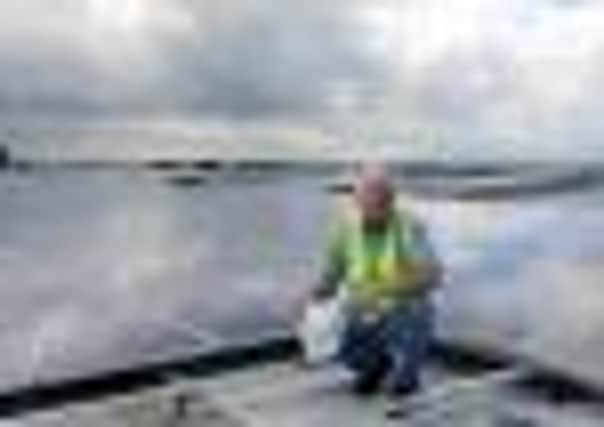Britain’s biggest solar rooftop in Littlehampton


Thousands of electricity-generating solar PV panels have been fitted to the roof of the large distribution centre at the rear of the Watersmead site and will be switched on towards the end of next week.
As well as supplying the company’s industrial units and offices with power, the system will earn The Body Shop money through the government’s Feed In Tariff, which rewards producers of renewable electricity with generous payments.
Advertisement
Hide AdAdvertisement
Hide AdCosting around £2.8m, including cabling work, the solar power plant will generate around 900,000KwH of electricity.
However, plans for a 46m (150ft) high wind turbine have been put on hold because of potential objections from backers of the proposed North Littlehampton development, which could see housing built at the rear of The Body Shop.
The ethical beauty products company is now in talks with the developers over the location of the turbine, which was considered to be too close to the proposed housing. One possibility is to join forces and build a small cluster of wind turbines a little further east, to supply the new homes with electricity as well as The Body Shop.
Kevin Lade, environmental projects manager for The Body Shop, said the massive investment, the biggest capital scheme at The Body Shop apart from information technology, was a big vote of confidence in the future of the Watersmead site, which has seen a substantial cut in its workforce in recent years.
Advertisement
Hide AdAdvertisement
Hide Ad“The scale of this investment speaks volumes for the longevity of this site. It is also a reminder of our parent company, L’Oreal’s strong commitment to the environment.
“It literally is shouting from the rooftops that this is a big, expensive project, but a very worthwhile one,” he said.
A total of 3,658 solar panels are being installed, covering an area the size of approximately four football pitches. However, because of a parapet around the roof, they are almost invisible from off the site and did not need planning permission. The panels are expected to produce almost a quarter of the Watersmead site’s electricity over one year.